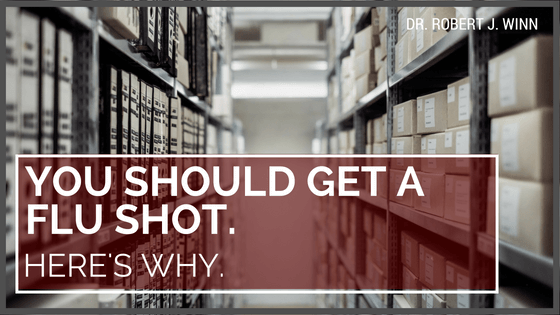Another year, another flu season. We all think we know how to protect ourselves from the onslaught of fevers, coughs, and sniffles that take our workplaces and schools by storm from October through May. We restock our desks with Purell, remember to take our immune-boosting vitamins, and try to steer clear of that one guy who clearly should have called out sick. Then, if we’re really on top of our game, we head to the doctor to get a flu shot.
Or maybe we don’t.
Worryingly, more and more people have been conveniently forgetting their doctors’ pleas to immunize – or flat-out refused to get the shot. According to statistics provided by the CDC, barely a third of patients aged 18-49 and just 50% of children under the age of 17 received a flu vaccine in 2015. A quick scroll through any message board on the subject reveals a host of excuses:
It never works!
I haven’t gotten sick, and I never get the flu shot.
I think it’s better if I just don’t get it this year.
Reasons like these sound reasonable without context, but they simply don’t stand up to the research. Scientists engineer new flu vaccines each and every year to keep up with the fast-paced evolution of flu viruses. The seasonal flu vaccine we receive at our doctor’s offices and pharmacies protect us from the three or four flu viruses that those researchers believe are most likely to spread and put otherwise healthy people at risk. Now, is there a chance that you could get a odd strain of flu that isn’t covered by the immunization shot? Yes. But given the amount of research that goes into engineering the vaccine, it isn’t likely. Ultimately, though, your decision to forego the flu shot can have an impact not only on your health, but the wellness of everyone you come into contact with – even people you’ve never spoken to.
You see, we have an alarming tendency to treat the flu the way we do seasonal allergies; when we hear complaints of it starting, we stock up on our favorite brand of hand sanitizer and tissues and hope that it won’t hit us. But in treating the flu as a common nuisance, we’ve lost sight of how truly dangerous it is. In 2015, over 57,000 people in the U.S. died from the flu, most of them older patients and children. In contrast, the Ebola virus that caused such a media furor that same year cost roughly 10,000 lives worldwide. The flu ranks well within the CDC’s top ten list of leading causes of death in the United State. Clearly, our stock of hand sanitizer isn’t cutting it when it comes to prevention.
Vaccines protect us – and not just as individuals, but as communities. Despite what people might proclaim on message boards, not having the flu despite not getting a flu shot might not be due to luck or a particularly robust immune system, but to herd immunity. When a large enough portion of a population are vaccinated against a disease, their immunity can slow the spread of disease and indirectly protect the non-vaccinated against its spread. Herd immunity is a literal lifesaver for immunocompromised patients who aren’t able to safely take a flu shot; it can also be an added line of protection for very young children or older patients. A report from the CDC estimates that the flu shot prevented over five million cases of the flu, 70,000 hospitalizations, and over 3,000 deaths over the course of the 2015-2016 flu season.
But what happens when herd immunity is broken? If enough of us stop getting our flu shots, we dismantle the barrier of protection we’ve built around our communities. Is it strictly necessary for you to get your flu shot? No – and you’ll probably be fine, because you’ll have the benefit of herd immunity. But for the sake of your immunocompromised colleague and the kids on your neighborhood block, I hope you’ll consider dropping by for a vaccination.


